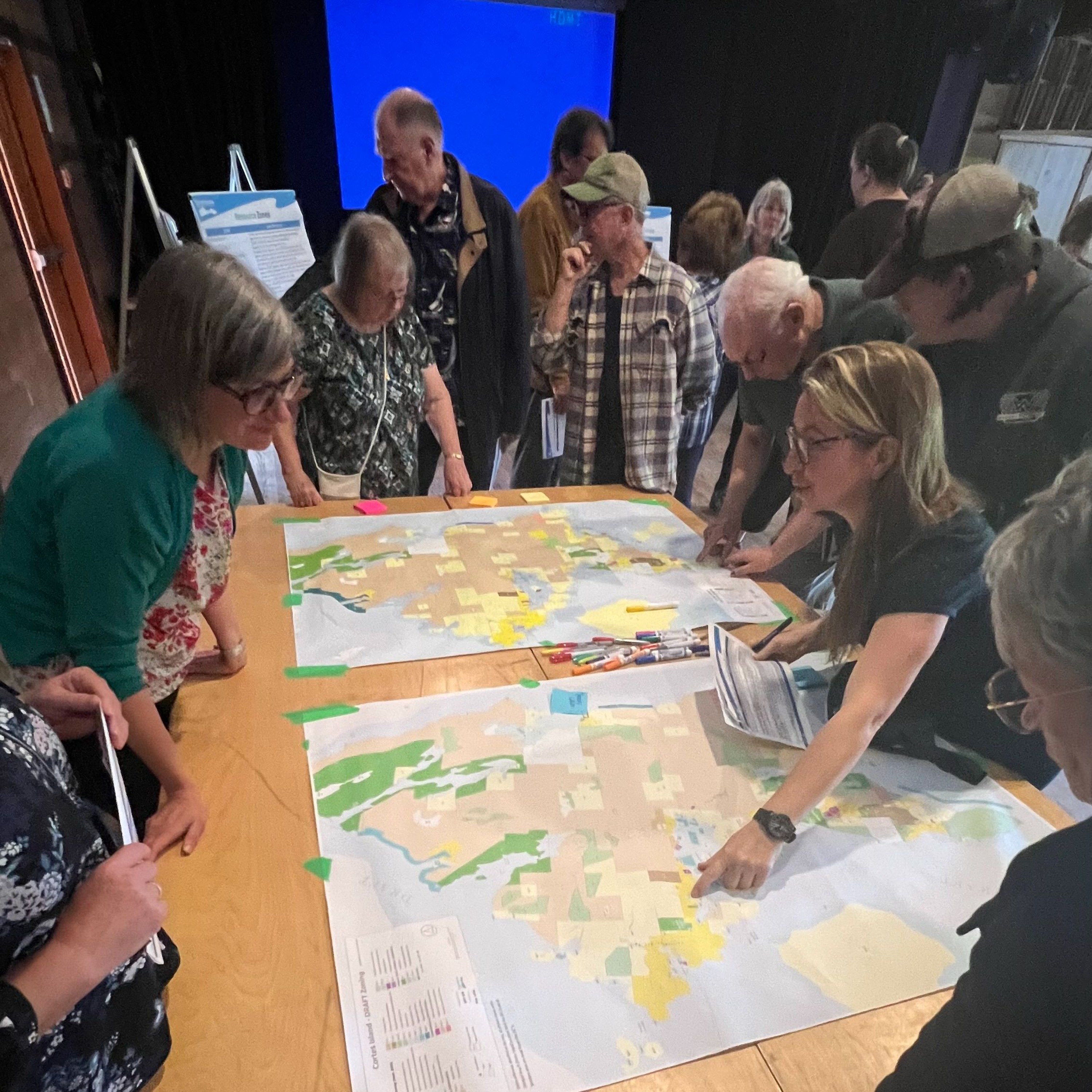Sept 12th Zoning Bylaw Review in Mansons Hall
- Author
- roy.hales9.gmail.com
- Published
- Sat 14 Sep 2024
- Episode Link
- https://soundcloud.com/the-ecoreport/sept-12th-zoning-bylaw-review-in-mansons-hall
Roy L Hales/ Cortes Currents - Close to 60 Cortes Island residents turned out for the Zoning Bylaw Review Meeting in Manson's Hall on Thursday, September 12th. The following article consists of audio clips of the main speakers, taken at the meeting, and an interview with Regional Director Mark Vonesch the following morning.
Mark Vonesch: "Leading up to it, I think there was a little bit of tension in the air. ‘What's going to happen?’ ‘How are we going to change our zoning in a way that's good for Cortes and protecting what we have here, but also making room for more housing and addressing the housing challenges that we face?’”
“I think the key takeaway is this is a process that we're still in the middle of. There's still lots of opportunity for input. We've had four meetings leading up to this. Last night's meeting was about presenting the summary of the findings from the previous meetings, and giving us a sense of what the Zoning Bylaw draft is going to look like.”
“The biggest shift, based on the input from the community, is that people are looking to increase density on rural residential lots."
Annie Girdler, a planner with the Strathcona Regional District (SRD), explained, "We've also added the potential for an additional dwelling unit on lots greater than one hectare. Previously a residential property was permitted a single dwelling and one secondary suite or an additional dwelling unit. The proposed change is that this property would now be allowed to have a secondary suite AND an additional dwelling unit."
Another proposal is to increase in the maximum size of additional dwellings from about 650 to about 840 square feet.
Meredith Starkey, Manager of Planning and Parks for the SRD, stated, "The secondary units were previously called ‘Granny Flats’ in some places because it's intended for your parents, in-laws or a renter or a couple etc, but our world is changing. There may be more families who want to live in a secondary dwelling. So, that's certainly a possibility."
Annie Girdler: "We've also added a new provision on clustered housing and how to accomplish that. We've also removed regulations that are not in the SRD's jurisdiction to enforce. Lastly, we've consolidated or removed zones that were either not in use or they were duplicate zones."
"The current Zoning Bylaw is from 2002, and as a legislated document, there's several requirements under the Local Government Act that a Zoning Bylaw has to meet. Many of those requirements are new since 2002. So a review is necessary to ensure that our bylaw meets provincial requirements and is legal."
"The goal is to bring the Zoning Bylaw into better alignment with your Official Community Plan (OCP). We'll also be removing or correcting outdated regulations, updating some of the terms with new language that's consistent, and also addressing some of the modern challenges, which we've heard a lot about."
”Our goal for this phase of the project is to hear your feedback as a community. It’ll give us a chance to either confirm that the provisions look how they should, or revise as necessary if we were way off. This revision process will be ongoing, and then we'll move on to the regular bylaw referrals process which will involve consultation with other government agencies, other levels of government, and First Nations. Once that phase is complete, we can move on to the bylaw adoption process. At that time we will have a formal public hearing and that will be the last opportunity to provide public input on a draft bylaw."
